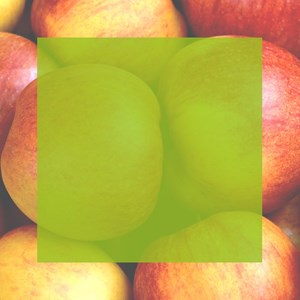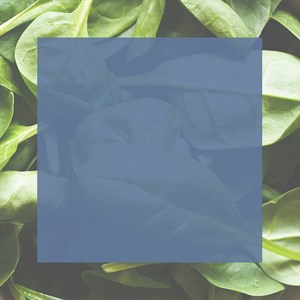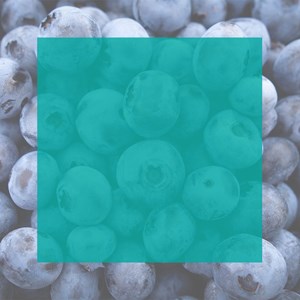Certain foods like tofu, hempseed and certain grains (quinoa for example) are rich and diverse in their amino acid (protein) content, however most plant food proteins are restricted in their concentration of a variety of essential amino acids needed by the body. (You can think of these as the building blocks of proteins).
But by eating a variety of plant proteins, you can optimise your protein intake. The body is very clever at balancing complementary amino acid levels from various vegetables, cereals, pulses, nuts and seeds.
A BRIEF SUMMARY OF WHAT TO EAT EVERY DAY AS A GUIDE:
4 or 5 servings of fruit and vegetables
3 or 4 servings of cereals/grains or potatoes
2 or 3 servings of pulses, nuts and seeds
Soya products
A small amount of vegetable oil, or butter
Some yeast extract that has been fortified with vitamin B12
.
GUIDE to VEGETARIAN PROTEINS
Despite peoples’ concerns, a proper vegetarian diet will supply good and satisfactory protein intake. In the book called “The China Study” the researcher concluded after 60 years researching food and protein intake, that plant sourced proteins helped to “switch off” cancer cells (apoptosis) while animal proteins did not
WHAT ABOUT VEGANS?
A plant-based diet includes a wide variety of whole foods consisting of beans, whole-grains, fruits, vegetables, nuts, and seeds, along with products made from these natural foods, such as tofu and tempeh
IS PLANT PROTEIN INFERIOR TO ANIMAL PROTEIN?
No: Plant proteins contain the same 23 amino acids as animal proteins. If a person is eating a broad selection of plant-based foods and consuming adequate calories, it is unlikely he or she will be protein deficient. Physicians in the United States rarely encounter patients who are deficient in protein. Deficiency occurs in countries with food shortages where malnutrition is prevalent
CAN WE EAT TOO MUCH PROTEIN?
Absolutely, although the health concerns relate far more to over-consumption of animal protein. The average person in America consumes foods containing 100 to 120 grams of protein daily, mostly from animal products. Combined with a sedentary lifestyle, excess animal protein puts a great deal of stress on the kidneys causing premature aging. It can cause deterioration of the nephrons, which are the kidney's filtering system, and the risk of kidney stones in increased
FURTHER HEALTH RISKS
Other health conditions from excessive protein include excessive calcium leaching from the bones causing osteoporosis, acid reflux, obesity, plaque build-up in the arteries, high blood pressure, pain from arthritis, high cholesterol, bad breath from sulphur-containing amino acids, and increased risk of cancer, especially liver and colon cancer.
Here's a quick run-down of foods that are high in protein, as well as a few suggestions on how to make the most of them.
GRAINS, RICE and CEREALS
Grains: Wheat (whole, cracked, bulgar, flakes, bran, germ, semolina, couscous), amaranth, buckwheat, barley, farro, corn (or maize - sweet corn, popcorn, polenta), millet, sorghum, oats, rye, quinoa, wild rice
Rice: white and brown rice, white and black sticky rice, white and brown long-grain rice, basmati rice, white short-grain rice (also known as pudding rice), Thai fragrant (or jasmine) rice, red rice (e.g. Camargue), Italian risotto rice (arborio, carnaroli, vialone nano), calasparra, Valencia (paella) rice
Grains and cereals go well beyond bread: a chance to become creative in the kitchen.
NUTS and SEEDS
Nuts: almonds, cashew nuts, coconuts, hazelnuts, macadamia nuts, peanuts, pecans, pine nuts, pistachios, sweet chestnuts, walnuts
Seeds: poppy, pumpkin, sesame, sunflower, linseeds (flax seeds)
Linseeds are a particularly good source of an essential fatty acid called a-linolenic acid, that supports proper nerve function and helps reduce symptoms of arthritis and heart disease.
PULSES
Peas, beans, lentils. Use super-nutritious pulses - fresh, dried or canned - as the basis for a huge variety of dishes.
Soya products and mycoproteins. Miso, soya, tempeh, textured vegetable protein (TVP), tofu (bean curd) and mycoproteins. Products made from soya are incredibly versatile and high in protein.
WHEAT PROTEIN
A useful ingredient for a vegetarian diet is wheat protein, sometimes called seitan, which is derived from wheat gluten (the protein part of flour). The gluten is extracted from wheat and then processed to resemble meat. It is more similar to meat in texture than either textured vegetable protein or mycoprotein and is used as a meat substitute in a range of foods. It tastes like meat, is naturally low in fat and can be roasted, baked, stir-fried or stewed. Look out for it in health food stores
WHERE DO WE GET OUR PROTEIN?
An average restaurant menu is proof that the centrepiece of the Western meal is the large serving of meat, chicken or fish, frequently prepared in creamy sauces or melted cheese. The portions served at one meal alone come close to fulfilling a day's worth of protein needs and confirms our obsession with eating protein. Let there be no misunderstanding: protein is a necessity to a healthy body, and it is important to replenish our store of protein every day. The body doesn't store protein as it does other nutrients, so it must be replaced each day as a source of nourishment for building and repairing new cells, hormones, antibodies, enzymes and muscle tissue. But just how much protein do we really need?
CALCULATING OUR PROTEIN REQUIREMENTS
Studies on nitrogen balance recently have provided more accurate ways to measure the body's protein requirements. Joel Fuhrman M.D., in his book Eat to Live, writes that an easy way to calculate your own daily protein requirement according to the U.S. RDA is to multiply 0.36 (grams) by your body weight. That translates to about 44 grams for a 120-pound woman and 54 grams for a 150-pound male. In metric terminology the RDA is 0.8 grams per kilogram of body weight
Brenda Davis R.D., and Vesanto Melina M.S., R.D., in their book Becoming Vegan, consider 0.9 grams per kilogram of body weight to be the ideal for vegans eating whole plant foods such as legumes, whole grains, and vegetables. Multiplying 0.45 grams by your body weight in pounds will give you the approximate protein need for your body. As it happens whole-plant foods have reduced digestibility compared to more refined foods such as tofu, textured soy protein, and meat substitutes. With this slightly higher figure, a 120-pound person would need 54 grams of protein daily and a 150-pound person 67.5 grams
Another way to calculate your RDA for protein is to divide your weight in pounds by 2.3 to determine your weight in kilograms, and consume 1 gram of protein for every kg of body weight. Those who include tofu, textured soy protein, meat substitutes and refined grains will find 0.8 grams per kilogram of protein daily quite adequate
PROTEIN IN PLANT FOODS
The lists below, using figures from the USDA Nutrient Database, list the protein content of the plant-based foods that comprise the vegetarian and vegan diets. People are often surprised to learn that all plant foods contain protein. In fact, it is protein that gives all plants their structure. Whether plants grow upright or sprawl on a vine, protein is a basic component of their cell structure.
Here is a brief list of the richer protein vegetarian foods. All numbers are in grams
Protein in Shelled nuts and seeds (in grams):
Soynut 10 grams
Peanut/sunflower seed 8
Pumpkin seed/sesame seed/almond nut 7
Protein in Beans (cooked):
Soybeans 29
Lentils 18
Aduki/cannellini/cranberry bean 17
Navy beans/split peas 16
Protein in grains per quarter cup:
Triticale 25 grams
Millet 8
Wheat (whole berries) 6 – 9
Amaranth/Oat,bran/Wild rice/Rye, berries 7
Protein in fresh Vegetables (cooked):
Chives (1oz) 8
Sweet corn (1 cob) 5
Whole baked potato 5
Peas (half cup)/artichoke (whole)/ 4
Swiss chard (1 cup)/Fennel (1 medium bulb)/Jerusalem artichoke/Kohlrabi 3
There are too many to list, but there are a number of meat/fish substitutes in the form of veggie burgers and patties that are rich in protein, as high as 30grams for 3oz in some cases
CONCLUSION:
If you are vegetarian or vegan you don’t need to be concerned about lacking in protein in your diet, but it is wise to establish which foods are available to you that are rich in protein. Please contact me if you would like a more comprehensive list.
Meat consumption certainly has its place in a balanced diet – the healthy approach is to avoid fatty meat, try to eat organic and don’t over-consume red meat. Avoid pork in all its forms. It is worth noting that vegetable protein is very easily and quickly digested, whereas meat protein is a much lengthier process and requires a lot more of the body’s energy
Our most recent product launch is an Organic Pea Protein which is an incredibly healthy and concentrated plant protein in powder form, perfect to mix in smoothies and you can also bake with it.
Organic Pea Protein link: http://www.jerseyfoodstate.com/p/93/organic-pea-protein





